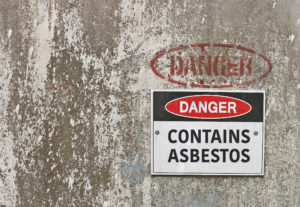 Asbestos is a durable mineral with an infamous history, but it’s also an often overlooked indoor health hazard. Prior to 1980, it was very common for buildings and homes to be built with asbestos-containing materials (ACMs) up until it’s dangerous health effects were discovered. Not only can exposure lead to a number of chronic illnesses, it is the leading cause of occupational cancer in the United States. Since this toxin was in high-demand around the world for commercial purposes, it has been estimated that roughly 125 million people endure occupational exposure to asbestos annually. It’s crucial for employees and the general public to learn where asbestos exists today and to raise awareness about how to reduce accidental exposure in an effort to prevent asbestos-related diseases from occurring.
Asbestos is a durable mineral with an infamous history, but it’s also an often overlooked indoor health hazard. Prior to 1980, it was very common for buildings and homes to be built with asbestos-containing materials (ACMs) up until it’s dangerous health effects were discovered. Not only can exposure lead to a number of chronic illnesses, it is the leading cause of occupational cancer in the United States. Since this toxin was in high-demand around the world for commercial purposes, it has been estimated that roughly 125 million people endure occupational exposure to asbestos annually. It’s crucial for employees and the general public to learn where asbestos exists today and to raise awareness about how to reduce accidental exposure in an effort to prevent asbestos-related diseases from occurring.
Here are several jobs considered to be at high-risk of exposure:
Veterans
Historically, asbestos-containing materials and equipment were used throughout the military, making veterans at a higher risk for developing an asbestos-related disease. They are considered to be among those most diagnosed with mesothelioma, an uncommon cancer affecting the lining of the lungs, stomach, or heart. Due to how common this mineral was in building materials for ships, Navy Veterans are suggested to be the most vulnerable.
Firefighters
Asbestos was praised for its ability to resist high temperatures, however, an active fire can cause this dangerous mineral’s fibers to break down and become airborne. Since any home or building constructed before 1980 runs the risk of containing asbestos, firefighters face a high risk of exposure. In addition, a firefighters protective gear can also be a source of possible exposure as the mineral was used in many products to protect workers from fire-related injuries.
Construction
Although there are many dangerous factors involved in construction work, exposure to asbestos is one way a worker’s health can be put at risk. It is reported that 1.3 million construction workers are exposed to this carcinogen each year, not to mention the mineral has a long history of being used in building materials such as drywall and insulation.
Other high-risk jobs include plant workers, shipyard workers, demolition crews, insulators, mechanics, pipefitters, and roofers.
If you are involved in a high-risk field it’s important to remember that your family and friends can endure secondhand exposure through contaminated clothing and equipment. Materials can accumulate these harmful fibers and expose those who come into contact with them through wearing, washing, or simply moving the exposed items. Employees who work in susceptible environments should always clean up and safely store their work materials before returning home.
How Companies Can Be Safe and Responsible
By raising awareness on high-risk occupations, we can educate people about how they may have come into contact with asbestos in the past and help those affected to be diagnosed early on. Exposure to environmental pollutants can be inevitable, making compliance key to prevention and occupational safety in the professional world. This process does not have to be a burden and with the help of our innovative software solutions designed by EHS experts, you can make a positive change to improve your hazard communication within your own business. With affordable, scalable solutions, GSM is fundamentally changing the way companies handle chemical and product safety information.
This post was a collaboration between Global Safety Management and Mesothelioma Advocate, Rosie Rosati.


